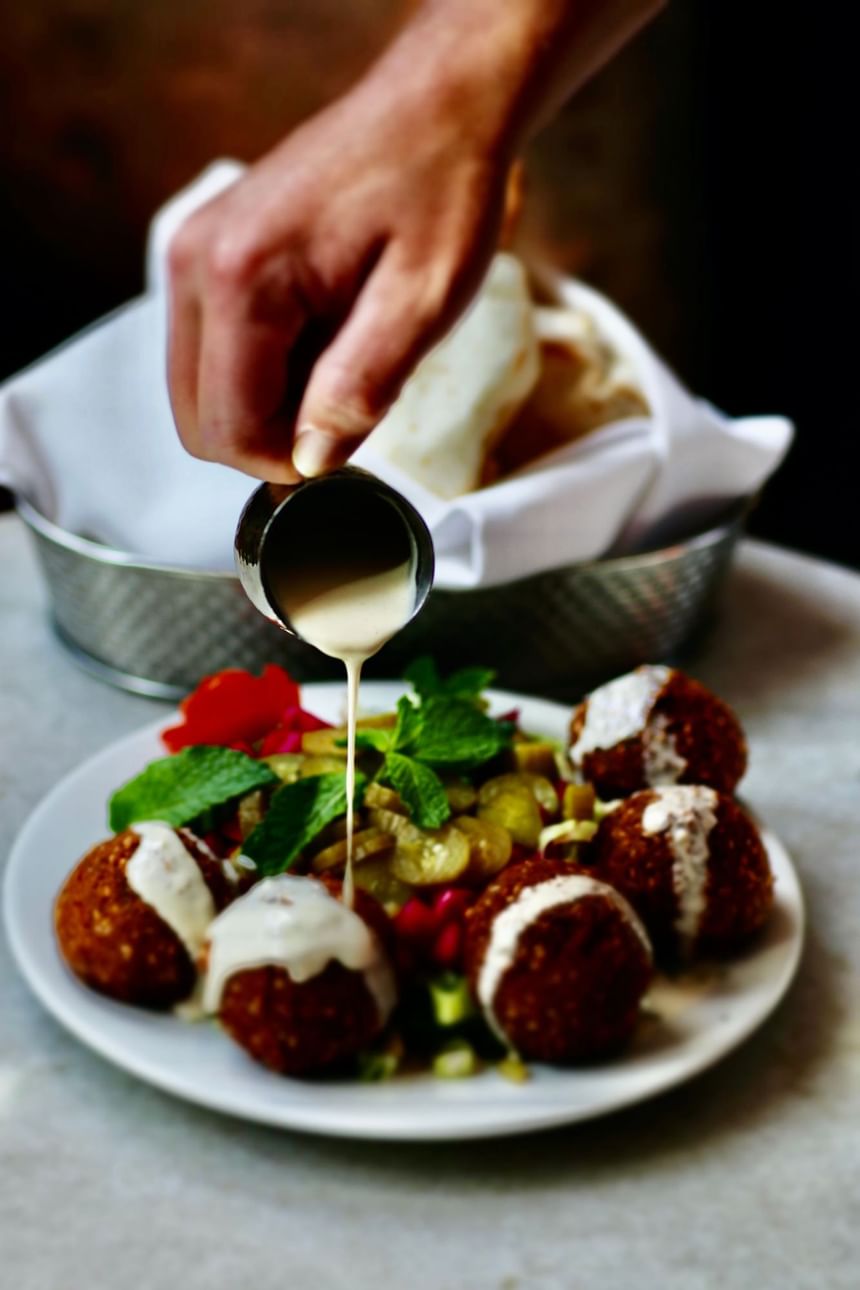Best Falafel Recipes: A Culinary Journey to Deliciousness
Guide or Summary:Chickpeas: The Foundation of FalafelHerbs and Spices: The Secret to FlavorTexture and Consistency: The Art of BatteringDeep Frying: The Fin……
Guide or Summary:
- Chickpeas: The Foundation of Falafel
- Herbs and Spices: The Secret to Flavor
- Texture and Consistency: The Art of Battering
- Deep Frying: The Final Touch
- Accompaniments and Dipping Sauces
Falafel, the quintessential Middle Eastern snack, has been a staple for centuries, captivating taste buds around the globe. These delectable balls of chickpeas, herbs, and spices are not only a delightful treat but also a nutritious option, rich in protein and fiber. In this comprehensive guide, we delve into the world of the best falafel recipes, exploring various techniques and ingredients to enhance your culinary creations. Whether you're a seasoned cook or a novice enthusiast, this article promises to inspire and satisfy your cravings for authentic, mouthwatering falafel.
Chickpeas: The Foundation of Falafel
The cornerstone of any falafel recipe is the chickpea, also known as garbanzo beans. These legumes are versatile and packed with nutrients, making them an excellent choice for a healthy snack or meal. When selecting chickpeas for your falafel, opt for those that are fresh and of high quality. They should be soaked overnight to soften and remove any impurities, ensuring a smooth and flavorful batter.

Herbs and Spices: The Secret to Flavor
The magic in falafel lies in the combination of herbs and spices that infuse the chickpeas with a symphony of flavors. Fresh herbs such as parsley and cilantro are essential, providing a vibrant green color and a subtle earthiness that complements the spices. Cumin, coriander, and turmeric are the cornerstones of the falafel spice mix, adding warmth, depth, and a hint of bitterness that balances the sweetness of the chickpeas.
Texture and Consistency: The Art of Battering
The texture and consistency of falafel are achieved through a meticulous battering process. A combination of flour, water, and baking powder is essential for creating a light and airy coating that enhances the flavor and prevents the falafel from becoming soggy. The batter should be thick enough to hold its shape but not so thick that it overwhelms the chickpeas.
Deep Frying: The Final Touch
Deep frying is the traditional method of cooking falafel, resulting in a crispy exterior and a tender interior. The oil should be hot, around 350°F (175°C), to ensure even cooking and a golden-brown finish. Fry the falafel in small batches to maintain the oil temperature and prevent overcrowding, which can lead to uneven cooking and a greasy texture.
Accompaniments and Dipping Sauces
Falafel is typically served with a variety of accompaniments and dipping sauces, enhancing the overall dining experience. Classic options include tahini sauce, a creamy and nutty dip made from sesame seeds, garlic, and lemon juice, and hot sauce, a spicy condiment that adds a zingy kick to the falafel. Fresh vegetables like cucumber, lettuce, and tomatoes are also popular choices, providing a refreshing crunch and a burst of freshness.

In conclusion, the art of making the best falafel recipes is a journey of exploration and experimentation. By mastering the selection of chickpeas, the combination of herbs and spices, the battering technique, and the frying process, you can create falafel that is not only delicious but also a testament to the rich culinary traditions of the Middle East. So, gather your ingredients, roll up your sleeves, and embark on a flavorful adventure that promises to satisfy your cravings and delight your taste buds.